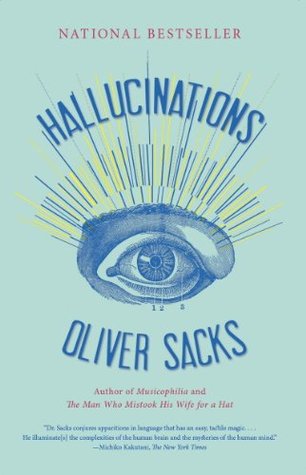More on this book
Community
Kindle Notes & Highlights
But generally, hallucinations are defined as percepts arising in the absence of any external reality—seeing things or hearing things that are not there.1
In contrast, you are passive and helpless in the face of hallucinations: they happen to you, autonomously—they appear and disappear when they please, not when you please.
We tend to speak of such things as misperceptions or illusions if there is something there to begin with—a human figure, for example—whereas hallucinations are conjured out of thin air.
Now there are only black hexagons looking for all the world like bathroom tiles.3
“Charles Bonnet syndrome”
She felt that her bed had become a deathbed and that these ominous figures were harbingers of her own death.
Ffytche’s work is the first to confirm that hallucinations make use of the same visual areas and pathways as perception itself.
No one can have hallucinations of musical notation or numbers or letters, for example, if they have not actually seen these at some point in real life.
A religious person might hallucinate praying hands, among other things, or a musician might hallucinate musical notation, but these images scarcely yielded insights into the unconscious wishes, needs, or conflicts of the person.
One of the defining characteristics of Charles Bonnet hallucinations is the preservation of insight, the realization that a hallucination is not real.
Marlon has ascertained that these figures are “like ghosts, not solid,” and that his arm will go right through them. Nevertheless, they seem quite real.
David Stewart speaks of his hallucinations as being “altogether friendly,” and he imagines his eyes saying, “Sorry to have let you down. We recognize that blindness is no fun, so we’ve organized this small syndrome, a sort of coda to your sighted life. It’s not much, but it’s the best we can manage.”
Whether darkness and solitude is sought out by holy men in caves or forced upon prisoners in lightless dungeons, the deprivation of normal visual input can stimulate the inner eye instead, producing dreams, vivid imaginings, or hallucinations. There is even a special term for the trains of brilliantly colored and varied hallucinations which come to console or torment those kept in isolation or darkness: “the prisoner’s cinema.”
anyone with a visually monotonous task is susceptible to hallucinations. (Similarly, auditory monotony may lead to auditory hallucinations.)
Such visual heightenings—whether due to disease, deprivation, or drugs—can take the form of enhanced visual imagery or hallucination or both.
Merabet et al. felt that the hallucinations reported by their subjects were entirely comparable with those experienced by patients with Charles Bonnet syndrome, and their results suggested to them that visual deprivation alone could be a sufficient cause for CBS.2
This made it clear that, at a physiological level, visual imagery differs radically from visual hallucination.
Sleep deprivation beyond a few days leads to hallucination, and so may dream deprivation, even with otherwise normal sleep.
The ability to imagine smells, in normal circumstances, is not that common—most people cannot imagine smells with any vividness, even though they may be very good at imagining sights or sounds.
This experiment, designed by David Rosenhan, a Stanford psychologist (and himself a pseudopatient), emphasized, among other things, that the single symptom of “hearing voices” could suffice for an immediate, categorical diagnosis of schizophrenia even in the absence of any other symptoms or abnormalities of behavior.
Prolonged silence or auditory monotony may also cause auditory hallucinations;
To live on a day-to-day basis is insufficient for human beings; we need to transcend, transport, escape; we need meaning, understanding, and explanation; we need to see overall patterns in our lives. We need hope, the sense of a future.
Epilepsy affects a substantial minority of the population, occurs in all cultures, and has been recognized since the dawn of recorded history. It was known to Hippocrates as the sacred disease, a disorder of divine inspiration.
In a petit mal seizure, there is only a transient loss of consciousness—the person seems to be “absent” for a few seconds, but may then continue a conversation or a chess game without realizing, or anyone else realizing, that anything unusual has happened.
If one loses half the visual field from a stroke or other injury, one may or may not be aware of the loss.
The amorality of nature is accepted, whether it takes the form of a monsoon, an elephant in musth, or a disease; but being subjected helplessly to the will of others is not, for human behavior always carries (or is felt to carry) a moral charge.
And one day the mind leaps from imagination to hallucination, and the congregant hears God, sees God.
Thus the primal, animal sense of “the other,” which may have evolved for the detection of threat, can take on a lofty, even transcendent function in human beings, as a biological basis for religious passion and conviction, where the “other,” the “presence,” becomes the person of God.


